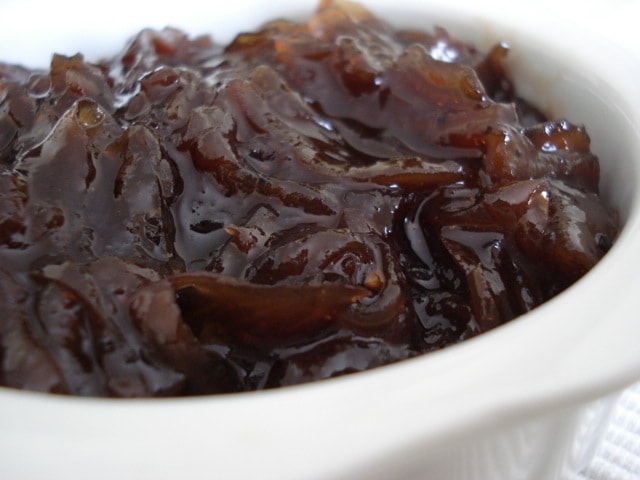The precise origin of onion marmalade is not well-documented, but it likely developed as a culinary creation in European cuisine. The process of slow-cooking onions with sugar and vinegar to create a sweet and savory spread is reminiscent of traditional preserving methods used in various cultures.
Onion marmalade shares similarities with onion jams and chutneys, which have been part of European culinary traditions for centuries. The slow caramelization of onions, combined with sugar and sometimes vinegar, has been a method used to enhance flavors and create condiments that complement a range of savory dishes.
While the exact origin remains unclear, it's safe to say that onion marmalade, like many culinary innovations, likely evolved over time through regional variations and personal adaptations in home kitchens. Today, it has become a popular and versatile condiment enjoyed in various cuisines around the world.
Onion marmalade is a condiment made by slow-cooking onions with sugar and other ingredients until they caramelize and turn into a thick, sweet, and savory spread. The term "marmalade" might be a bit misleading, as it traditionally refers to a preserve made with citrus fruit peel, but in this case, it's used more broadly to describe a jam-like consistency.
The basic ingredients for onion marmalade typically include onions, sugar, vinegar (often balsamic vinegar for a rich flavor), and sometimes additional seasonings like thyme or bay leaves. The slow cooking process allows the onions to break down and caramelize, creating a rich, sweet, and tangy flavor profile.
Onion marmalade is versatile and can be used in various ways. It's often used as a topping for savory dishes such as grilled meats, burgers, or sandwiches. It adds a depth of flavor and a touch of sweetness to a variety of dishes, making it a popular condiment in many cuisines.

